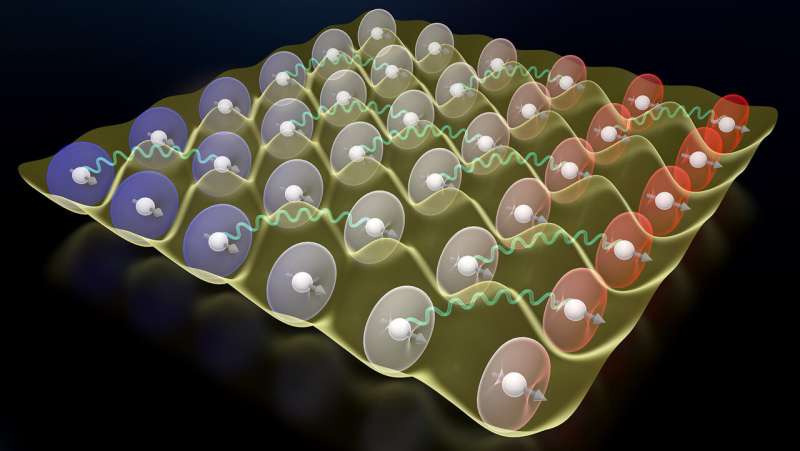Phys.org January 27, 2024
Collective couplings of atomic dipoles to a shared electromagnetic environment produce a wide range of many-body phenomena. A team of researchers in the USA (University of Colorado, Colorado State University) reported on the direct observation of resonant electric dipole-dipole interactions in a cubic array of atoms in the many-excitation limit. The interactions produced spatially dependent cooperative Lamb shifts when spectroscopically interrogating the millihertz-wide optical clock transition in strontium-87. They showed that the ensemble-averaged shifts could be suppressed below the level of evaluated systematic uncertainties for optical atomic clocks. They demonstrated that excitation of the atomic dipoles near a Bragg angle could enhance these effects by nearly an order of magnitude compared with nonresonant geometries. According to the researchers their work demonstrated a platform for precise studies of the quantum many-body physics of spins with long-range interactions mediated by propagating photons… read more. TECHNICAL ARTICLE

Atomic dipoles on a lattice interact to produce an observable spatially varying frequency shift. Credit: Steven Burrows/Ye Group